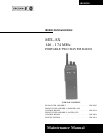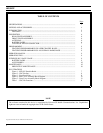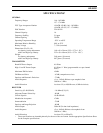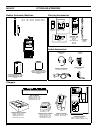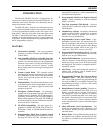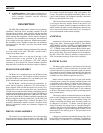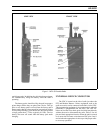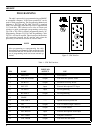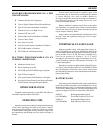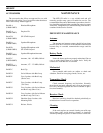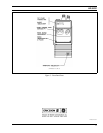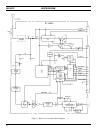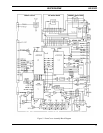
• Available Options - These options include the an-
tennas, audio accessories, batteries, carrying acces-
sories, chargers, lanyards, and the vehicular
charger/repeaters.
DESCRIPTION
The MTL-SX portable radio is consists of a two primary
assemblies. The Front Cover Assembly contains all of the
microprocessor circuitry, audio circuitry and the operating
controls. The Rear Cover Assembly houses the RF circuitry
which includes the transmitter, receiver and the frequency
synthesizer. The assemblies are electrically interconnected
by two single-in-line type connectors. When mated together,
the assemblies form a weather resistant die-cast aluminum
case that protects the radio’s circuitry from harsh outside
environments.
Power is provided by a battery pack that slides and locks
on to the bottom of the radio. The radio’s on/off switch is
located on the battery pack.
The antenna screws on to the top of the unit. A side
antenna connection is also provided at the UDC for an
external antenna or for test purposes. This UDC antenna
connection is also utilized for external antenna operation
when the radio is locked in the vehicular charger or repeater.
REAR COVER ASSEMBLY
The Rear Cover Assembly houses the RF Board in the
die-cast aluminum case. The complete assembly consists of
the VHF RF Board, aluminum case, top antenna jack, side
(UDC) antenna jack and various hardware.
The RF Board’s circuitry includes the transmitter, re-
ceiver and the frequency synthesizer. This FM circuitry is
under complete control of the microprocessor circuits. Con-
trolling data sent to this assembly from the Control Board
includes serial synthesizer data loading, transmitter/receiver
enabling and a transmitter power level signal. The RF Board
outputs the demodulated audio and a synthesizer lock status
line to the Control Board. During transmitter operation, the
RF power appears at the top antenna jack (or the UDC jack
if the appropriate adapter plug is inserted). The Rear Cover
Assembly maintenance manual contains a detailed circuit
analysis, mechanical, outline and schematic diagrams for
this assembly.
FRONT COVER ASSEMBLY
The Front Cover Assembly houses all of the operating
controls and the digital control circuitry for the radio. The
Control Board is installed in the Front Cover Assembly and
flex circuits include the Keypad, UDC and Speaker Flex
circuits. The speaker, microphone and Battery Plate are also
a part of this assembly. The complete assembly is housed in
the die-cast aluminum front cover.
The Control Board located in the Front Cover Assembly
is the largest and most complex board in the Front Cover
Assembly. It contains all microcomputer and audio circuitry
which controls the radio. See the maintenance manuals spe-
cific to the Control Board or the Front Cover Assembly for
service information on the related assembly.
ANTENNAS
Antennas are selected base on the operating frequency
range of the radio. Antenna option PANC1C, part number
19B234804P2, is a 146 - 162 MHz (red bands) antenna and
antenna option PANC1D, part number 19B234804P3, is a
157 - 174 MHz (orange bands) antenna. Both of these anten-
nas are helically-designed and mount in the antenna jack on
the top of the radio. An external antenna can be mounted to
the unit via the UDC. When an antenna is connected to the
UDC, the antenna on the top of the radio is disabled.
BATTERY PACKS
The battery pack connects to the bottom of the unit and
delivers a nominal 7.5 Volts dc to the radio. A recessed on/off
switch for the radio is located on the battery pack. An internal
fuse located in the radio’s Battery Plate protects the radio and
battery from excessive current draw. The battery packs are
available in several different capacities and sizes.
Radio contacts located on the top of the pack include
switched power, ground, the speaker enabling contacts and
a continuous power contact. In addition, four contacts are
located on the rear of the battery pack. These four contacts
provide connections to the slip-in type chargers or vehicular
chargers/repeaters while the battery pack is still connected
to the unit. The battery charging contacts are diode protected
from external shorts.
The chargers utilize an internal thermistor in the battery
pack to sense temperature and automatically control charge
rate of the battery. This allows for a maximum charge rate
without overheating the battery pack. All battery packs can
be charged in less than 1 1/2 hours with the rapid type
chargers. Nominal full charge time in a standard charger is
14 hours. The Service Section contains a detailed outline and
schematic diagram of a typical battery pack. Further service
information for the battery packs is also presented in the
Service Section.
Chargers are available with nominal charge times of one
hour (rapid) and fourteen hours (standard). Combinations
include single (1) and multi (5 or 6) position standard and
LBI-38432
6



